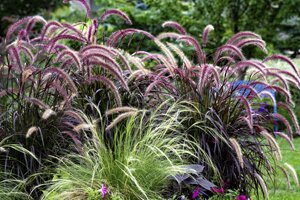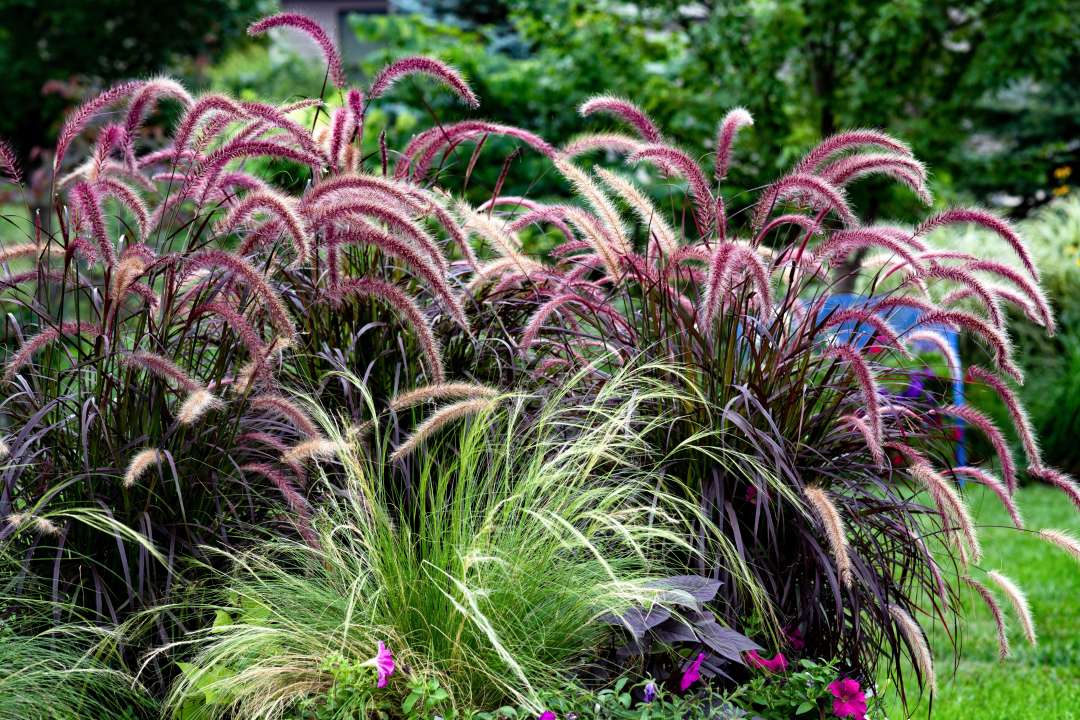Ornamental Grasses: Versatile Beauty

Ornamental grasses have become a staple in modern garden design — and for good reason. These dynamic plants add movement, texture, and year-round interest to outdoor spaces. Whether swaying gently in the breeze or standing tall with frosted seed heads in winter, ornamental grasses bring a natural elegance that few other plants can match.
In this article, we’ll explore the benefits of planting ornamental grasses, highlight some popular varieties, share planting ideas, and offer tips on how to create an ornamental grass border that elevates your garden's aesthetic.
Benefits of Planting Ornamental Grasses
-
Low Maintenance
Most ornamental grasses are hardy, drought-tolerant, and pest-resistant. Once established, they need minimal care and rarely require fertilizing or watering. -
Year-Round Interest
Grasses offer beauty through every season — from lush green or bronze summer foliage to golden autumn tones and frost-kissed seed heads in winter. -
Wildlife Friendly
Ornamental grasses provide shelter for insects and small creatures. Their seed heads attract birds, especially during colder months when food is scarce. -
Erosion Control & Windbreaks
Deep-rooted grasses like switchgrass (Panicum virgatum) help stabilise soil on slopes, while taller grasses can act as natural windbreaks in exposed areas. -
Design Versatility
With options ranging from compact clumps to towering plumes, grasses can be used as ground covers, focal points, borders, or even container specimens.
Popular Ornamental Grasses to Grow
Here are some tried-and-true favourites for various garden styles:
1. Miscanthus sinensis (Maiden Grass)
-
Height: 4–7 ft
-
Elegant arching leaves with feathery plumes in late summer. Excellent for screening or as a focal point.
2. Pennisetum alopecuroides (Fountain Grass)
-
Height: 2–4 ft
-
Graceful, mounded shape with bottlebrush-like flowers. Great in borders and containers.
3. Calamagrostis x acutiflora 'Karl Foerster' (Feather Reed Grass)
-
Height: 3–5 ft
-
Vertical, upright form. Early to bloom and remains attractive through winter. Ideal for formal or minimalist gardens.
4. Festuca glauca (Blue Fescue)
-
Height: 6–12 in
-
Compact, spiky clumps of blue-gray foliage. Perfect as edging or ground cover.
5. Panicum virgatum (Switchgrass)
-
Height: 3–6 ft
-
Tall, airy texture with strong vertical presence. Tolerates wet or dry soil and is native to North America.
Shop Grasses
Planting Ideas for Ornamental Grasses
Ornamental grasses can be used in a wide range of garden settings. Here are a few inspiring ideas:
-
Mixed Borders: Combine grasses with perennials like echinacea, rudbeckia, or salvia for a vibrant, textured border that changes with the seasons.
-
Prairie-Style Planting: Use a mix of native grasses and wildflowers to recreate a natural, meadow-like environment that supports pollinators.
-
Modern Minimalist: Feature a single type of grass like Karl Foerster in symmetrical rows or grids for a clean, contemporary look.
-
Container Displays: Smaller grasses such as blue fescue or dwarf fountain grass add structure and movement to pots on patios or balconies.
-
Water Features: Place taller grasses near ponds or streams for a soft, natural transition from water to land.
How to Create an Ornamental Grass Border
Creating a dedicated grass border is a fantastic way to showcase the beauty and versatility of these plants. Follow these steps to get started:
1. Choose the Right Location
Most ornamental grasses prefer full sun and well-drained soil. However, some varieties, like sedges (Carex spp.), tolerate shade and moist conditions.
2. Plan Your Layout
Think about height and texture. Use taller grasses like Miscanthus or switchgrass at the back, medium varieties like fountain grass in the middle, and low-growing types like blue fescue at the front. For rhythm, plant in odd-numbered groups (3, 5, 7) and repeat patterns along the border.
3. Prepare the Soil
Loosen the soil and remove weeds. Mix in compost to improve drainage and fertility. Avoid over-fertilizing, which can cause grasses to flop.
4. Plant and Mulch
Plant grasses at the same depth as their nursery pots. Water thoroughly after planting. Apply a layer of mulch to retain moisture and suppress weeds.
5. Maintenance
Cut back grasses in late winter or early spring before new growth emerges. Most grasses benefit from division every few years to maintain vigour and size.
Final Thoughts
Ornamental grasses are more than just “filler” plants — they’re design elements that offer structure, movement, and harmony. Whether you’re working with a small urban garden or a sprawling landscape, there’s a grass to suit your space. With minimal care and maximum impact, these versatile plants truly earn their place in every garden.
Ready to get planting? Start with just a few ornamental grasses and watch your garden come alive with texture, sound, and seasonal beauty.

